Wooden-Boat-Festival By Carol Russell
Photography by Donovan Knowles
Carbatec's Carol Russell and photographer, Donovan Knowles, visited the MyState Wooden Boat Festival in Hobart and discovered a vibrant community committed to keeping a long tradition of wooden boatbuilding and sailing alive. Carol and Donovan received some exceptional hospitality on land and at sea and over the following few months we will post a series of stories on our website about boatbuilding, restoration and the characters they met.
The festival, held every second February, is a lively gathering of people and boats from Australia and around the world. Over 600 wooden boats and thousands of people converged on Hobart for four perfect sunny days to revel in the beauty of these fine craft. Dozens of exhibits featuring demonstrations of traditional woodcraft by shipwrights and artisans as well as displays of tools and materials. There was an extensive program of lectures by historians, boat builders, adventurers and eccentric dreamers that tantalised the imagination.
The imagery of wooden boats is highly evocative and romantic. They symbolise a freedom that seems to be elusive in modern life. I must confess to feeling sheer unabandoned joy, standing on the deck of the 100 year old wooden steamship - the MV Cartela, as we motored alongside ‘the parade of sail’, an event where participating boats sail together up the Derwent River into Hobart to mark the opening of the festival.
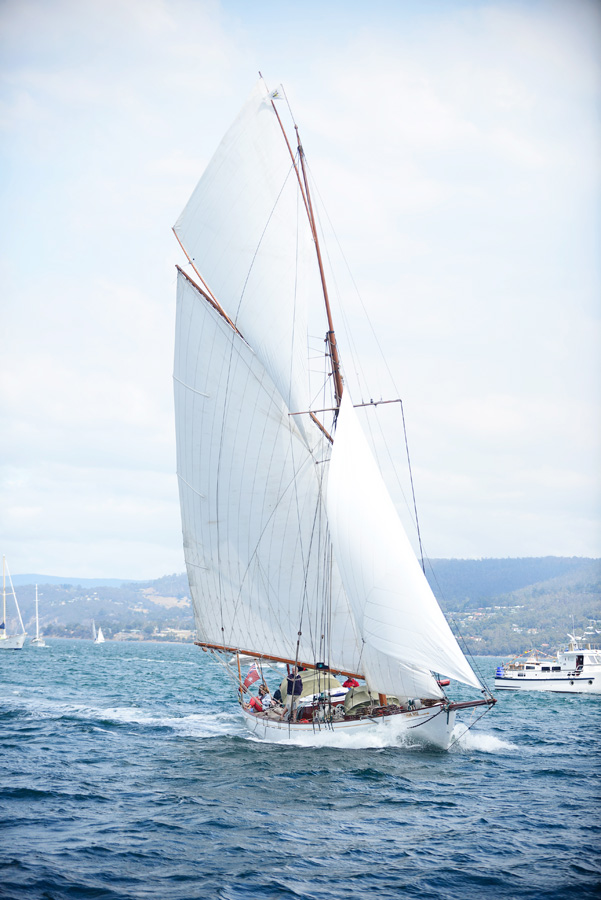 | | | |
'The Parade of Sail' marking the opening of the MyState Wooden Boat Festival. |
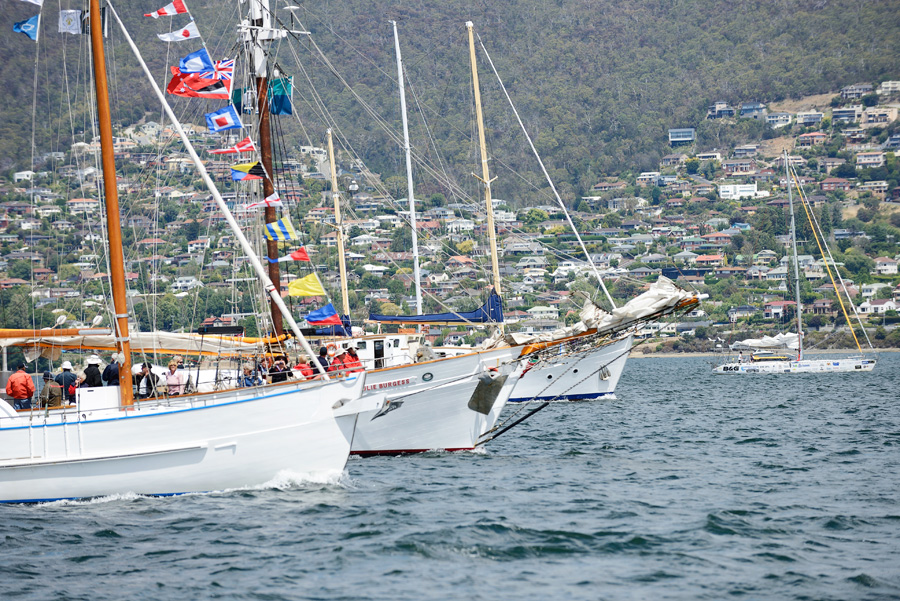 |
The Rusich, a replica Slavic Viking ship built in Russia, sailed all the way from Vladivostock as a tribute to Russian scientist and explorer Nicholas Miklouho- Maclay, who came to Australia in 1878. At 15 metres long and in no way luxurious, the only concession to modern life on the Rusich is the gas cooker and compulsory satellite navigation. The journey took two years and there was serious concern that the ship would not make it to the festival. After an emergency stop off in Brisbane to undergo some essential repairs. The crew received a hero’s welcome and celebrated their success with great enthusiasm.
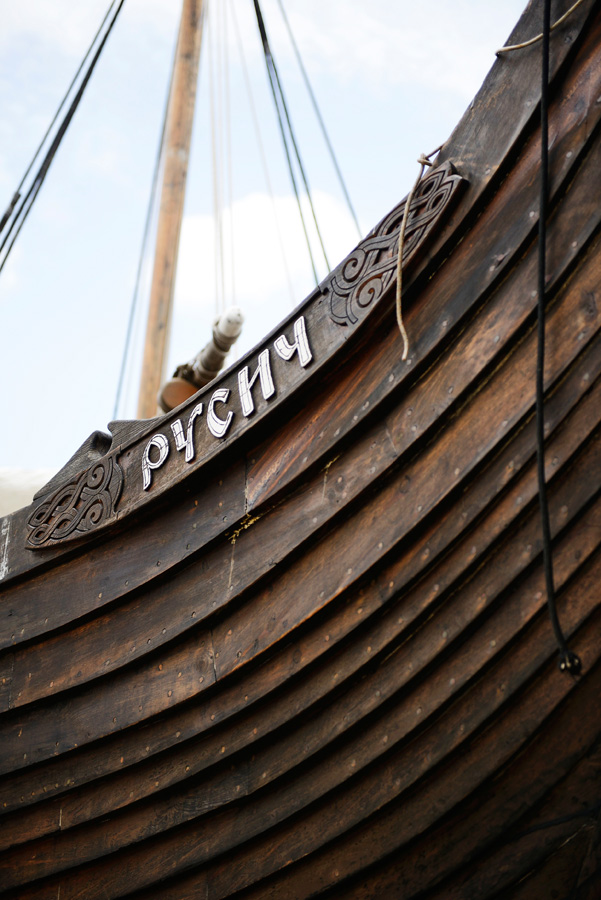 | |
The Rusich, a replica Slavic Viking ship built in Russia. |
With a long established maritime culture, Hobart is ideally suited to hosting the festival. In addition, the region boasts many skilled craftspeople and is known as a centre for excellence in boatbuilding. The presence of the Franklin Wooden Boat Centre, which runs a wide range of classes, has drawn in many would-be shipwrights as well as highly skilled craftspeople. Tasmania’s unique native timbers stand up well to the marine environment, Huon Pine, King Billy Pine, Celery Top and Tasmanian Blue Gum are some of the world’s most prized boatbuilding timbers and have a legendary status that is only increased by their diminishing availability.
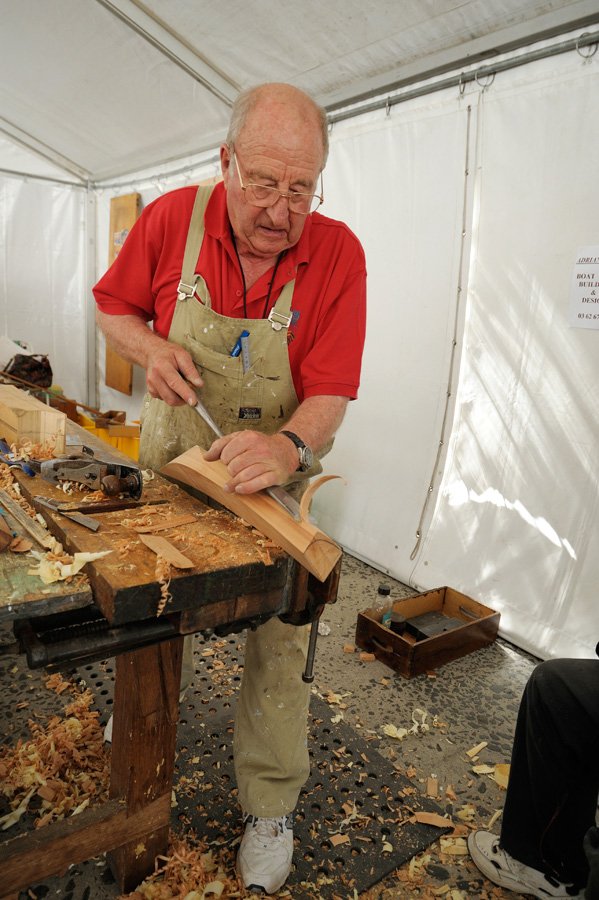 | 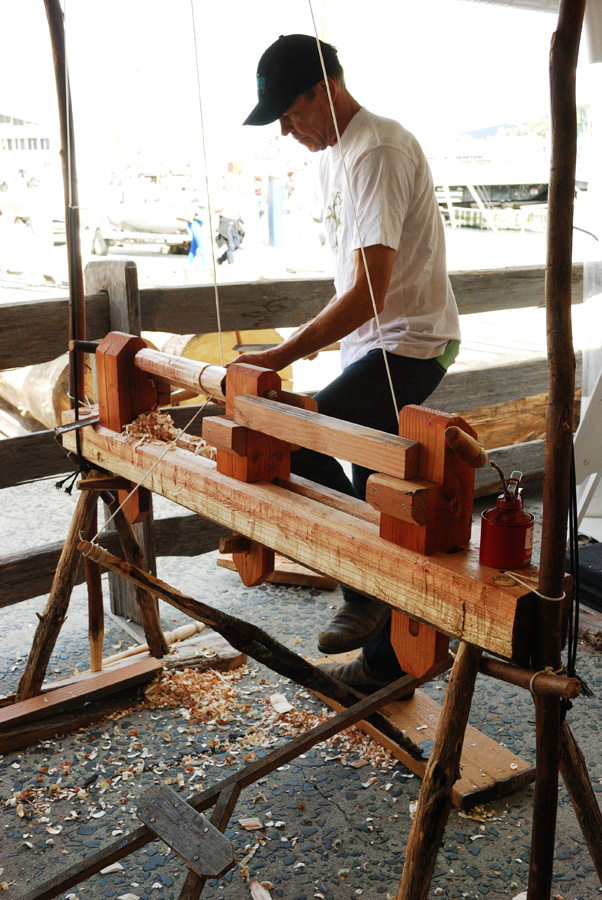 |
Skilled shipwrights and craftspeople with their work. |
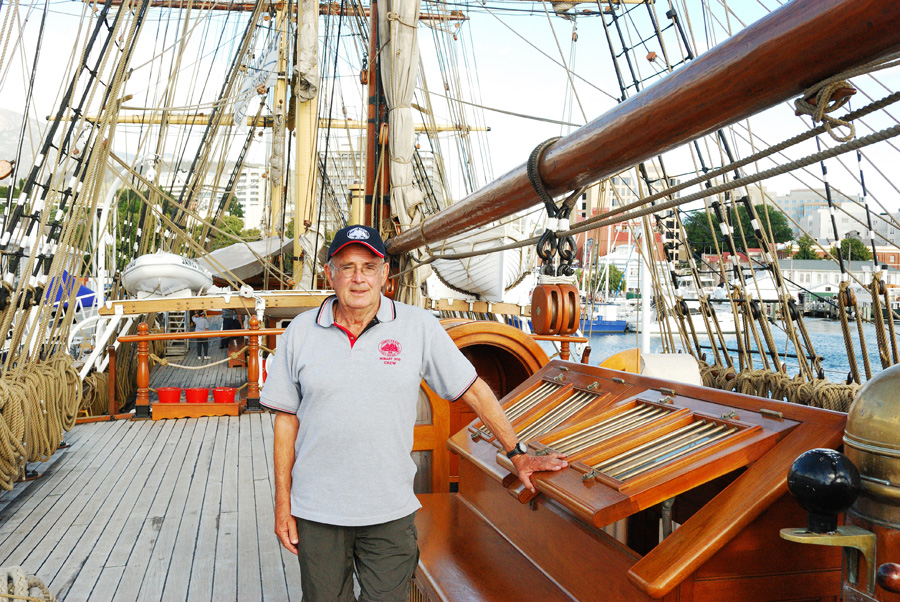 | 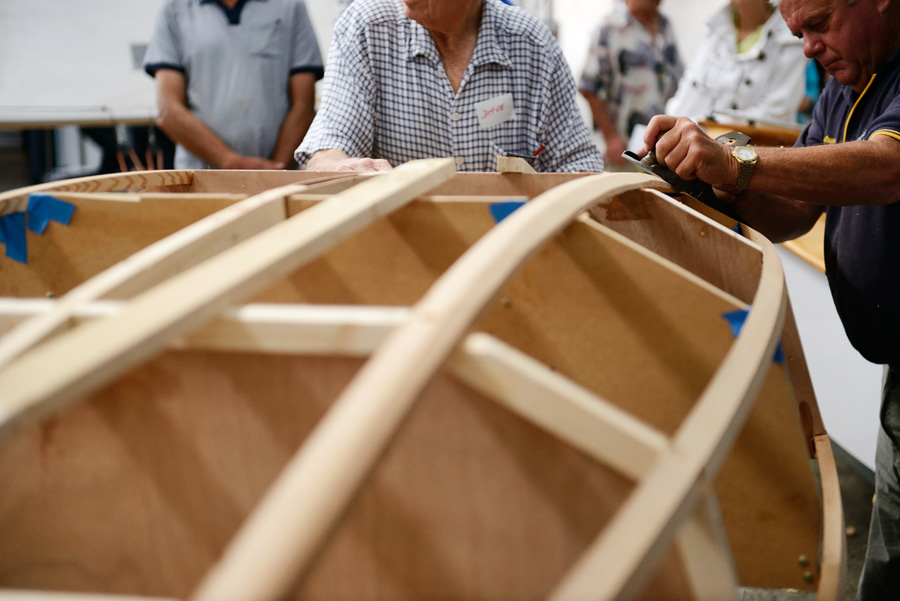 |
Peter Danvey, a veteran from the James Craig. | Building a firebug dinghy. |
The first of many wooden ships to sail up the Derwent River was the Lady Nelson in 1803. She was a double masted, square rigger known as a ‘Brig’. Aboard were the crew and first settlers, as well as ten convicts and three soldiers, that had been sent to Van Dieman’s Land.
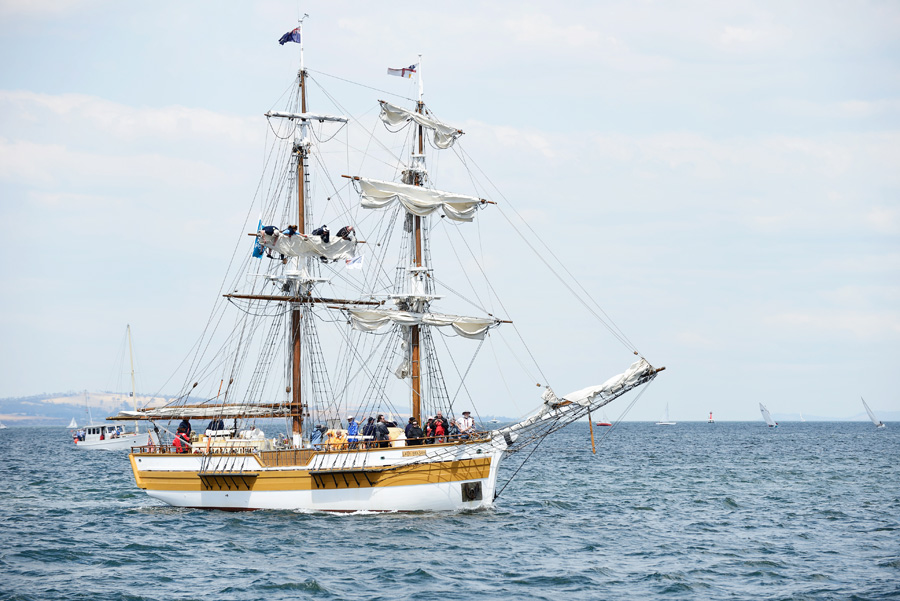 |
Replica of The Lady Nelson. |
The original ship was lost with all its crew in 1825, after it was captured by pirates near Timor. The replica that appeared at the festival was built in 1988 using Tasmanian Blue Gum for the keel and frames, Celery Top Pine decking and masts of Oregon Pine grown in Tasmania. The Lady Nelson is based in Hobart and was one of the stars of the show during the festival, along with the restored James Craig, the beautiful Brigantine Windeward Bound and the Enterprize from Melbourne.
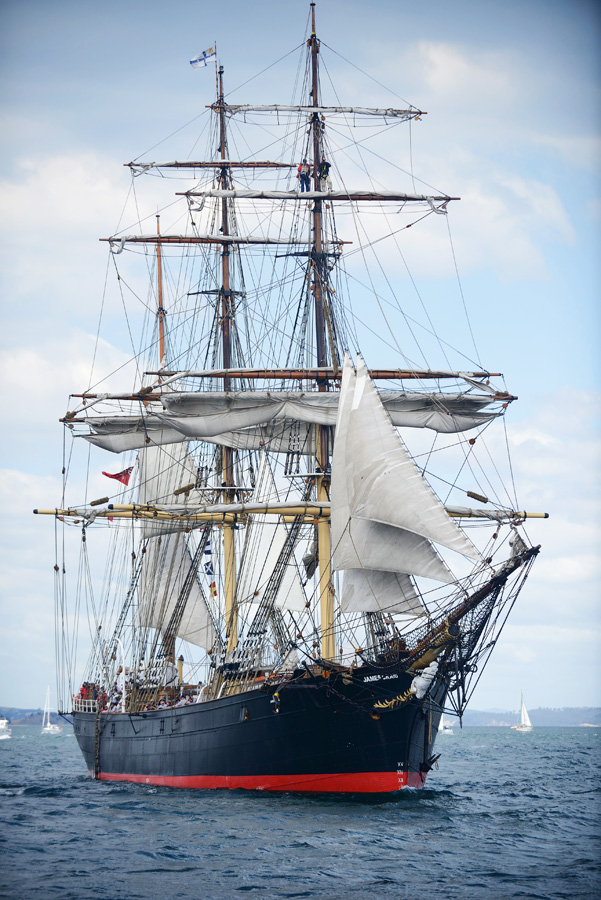 | |
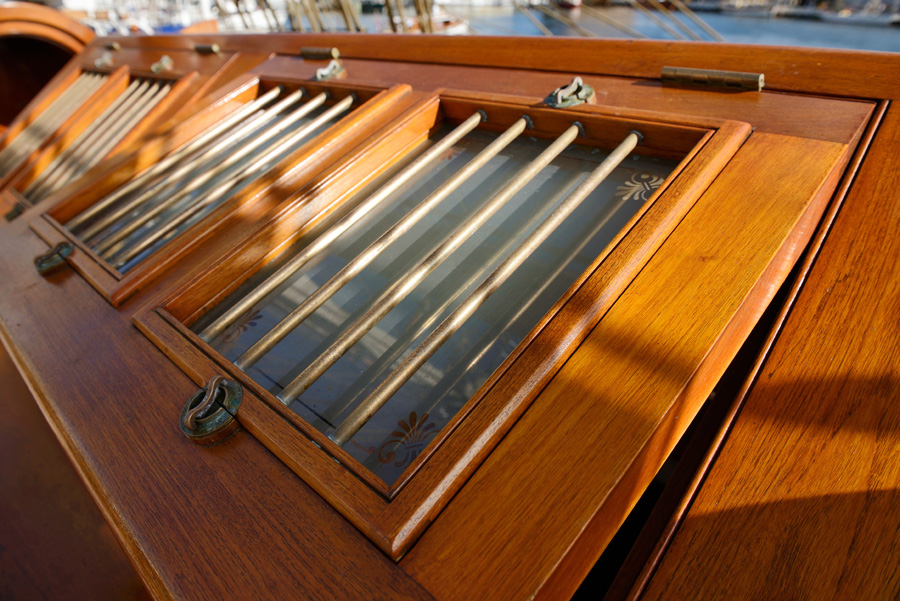 | |
The fully restored James Craig. |
The story of how the Windeward Bound came to be is one of great tenacity and belief. The ship was built by the captain, Sarah Parry and a small group of volunteers in the 1990s.The hull is strip planked Swamp Gum and is constructed entirely from salvaged and recycled material that Sarah and her crew were able to collect. Much of it came from old timber ships awaiting demolition.
The ship is based in Hobart and is now a sailing training vessel and has guided many young people into a maritime career. The crew work with many of the city’s troubled youth to help restore a sense of belief in themselves. Sarah explained that she always knew that this was the real purpose of the Windeward Bound.
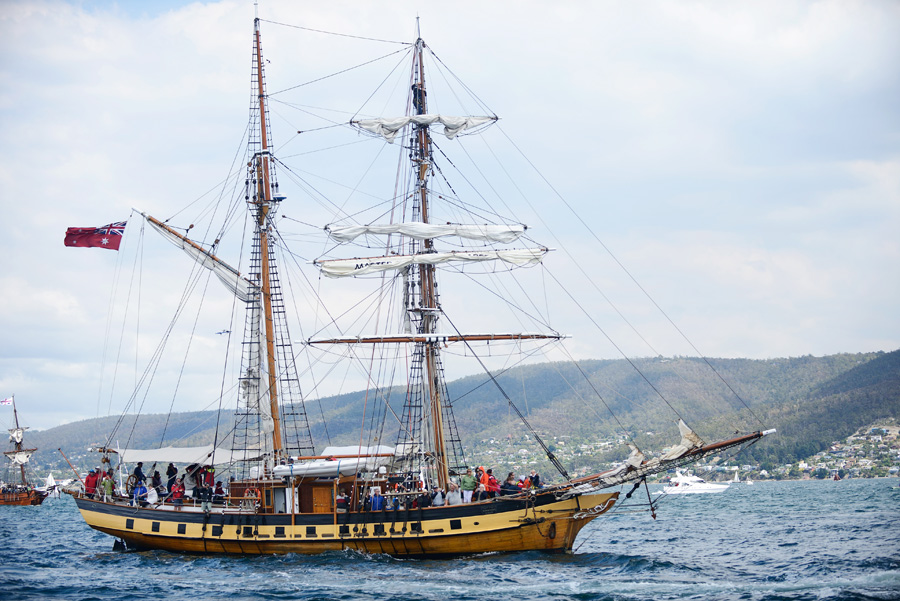 |
The Windeward Bound |
At the opposite end of the scale, the Maritime Museum in Hobart mounted a display of exceptional clinker-built dinghies by prolific local boat builder Reg Fazackerley. These dinghies epitomise the romantic image of traditional wooden boats with their curved planks, ribs and copper roves.
It is believed that Reg built over 100 vessels, the first when he was only 16 years old. They were built using only hand tools and he worked entirely by eye. Peta Knott of the Maritime Museum of Tasmania has been researching the life and work of Fazackerley. His boats are highly prized and are now collector’s items with significant value. The main characteristics of his dinghies include Huon or King Billy Pine planks and no ribs forward of the thwart
(cross brace that also serves as a seat). The nails are typically clenched below the thwart riser, then roved above it. One very endearing feature is the oak knees that act as braces, they are cut from naturally grown timber to utilise the strength of the curved wood grain that grows in tension or compression and give support where there is a natural bend or crook in a tree. Using the properties naturally present in the timber is a very traditional method of construction and marks this style of boatbuilding apart from the more contemporary approach of laminating. Reg’s dinghies also have a distinctive curvature to the transom, but most telling of all, he usually signed and dated each one with the initials R.F. under one of the seats.
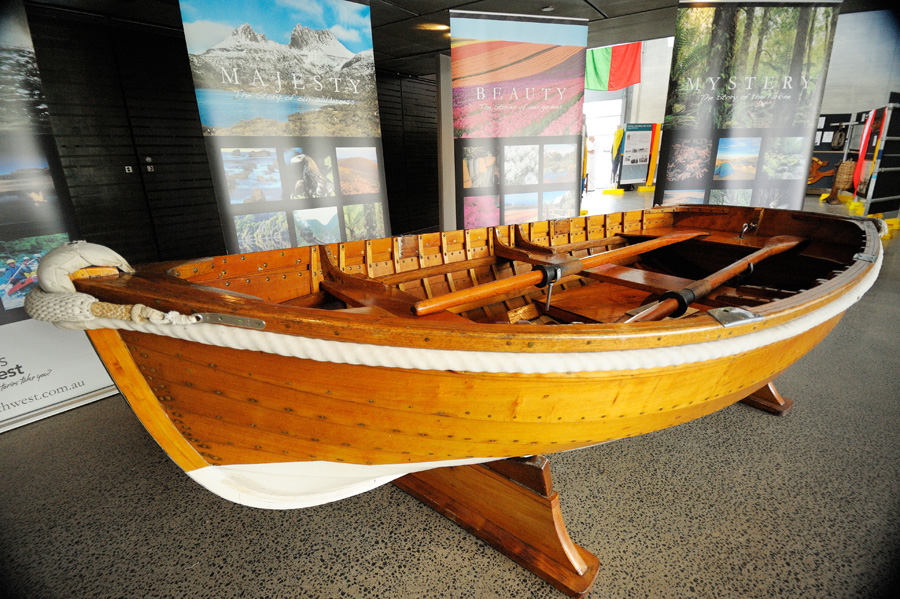 |
An original 'Reg Fazackerly' dinghy on display. |
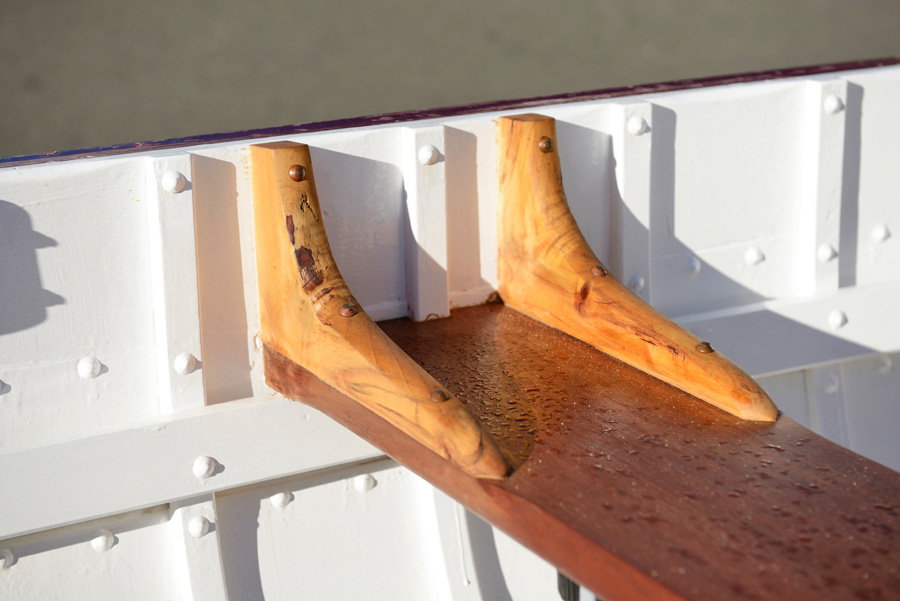 | |
The knees on a Fazackerly dinghy. | The natural tree bend used to create knees. |
After a presentation by Peta Knott about the work of Reg Fazackerley, we met Bruce Miller who built a clinker dinghy in 1967 under Reg’s tutelage. Bruce told the wonderful story of the process they went through together to build his one and only boat. He still owns it today and remembers the experience with great fondness. The dinghy has become a significant part of his family’s history.
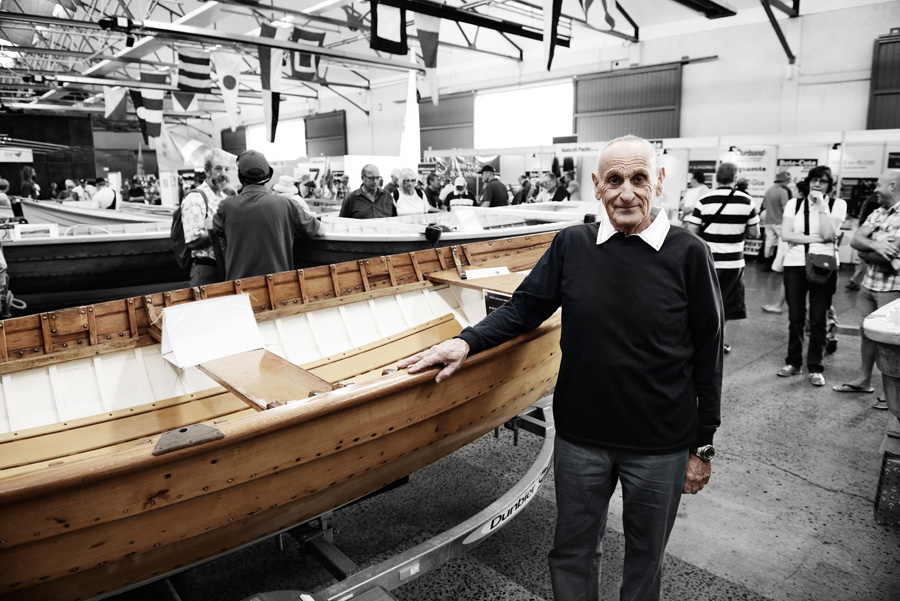 |
Bruce Miller with a Fazackerly Dinghy. |
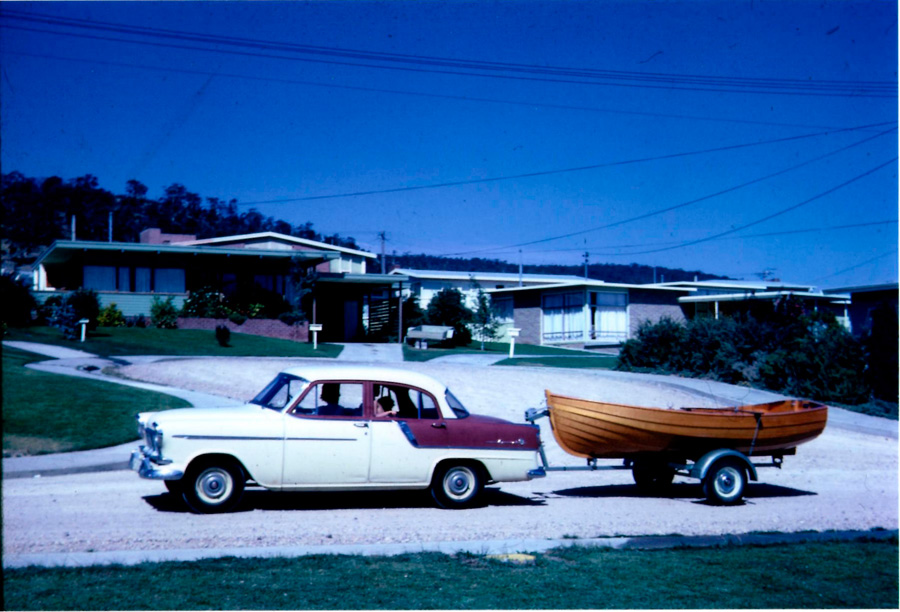 | |
The dinghy made by Bruce Miller under Reg Fazackerly's guidance. |
By the end of the four days, it felt as though some of the people and the boats at the festival were becoming old friends. There are many clubs and community groups that work to faithfully resurrect and maintain Australia’s maritime heritage.
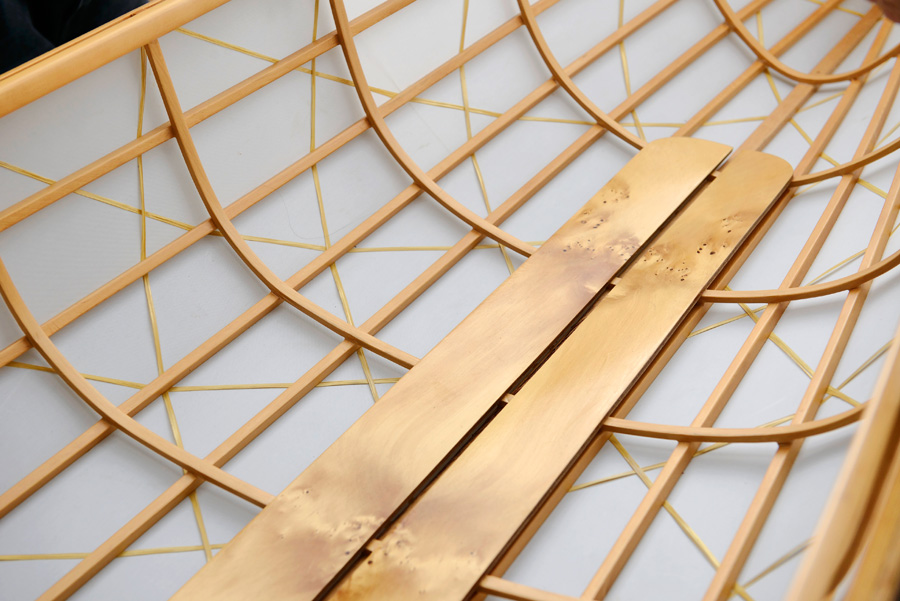 | |
A Dacron covered canoe. | An Irish Curach. |
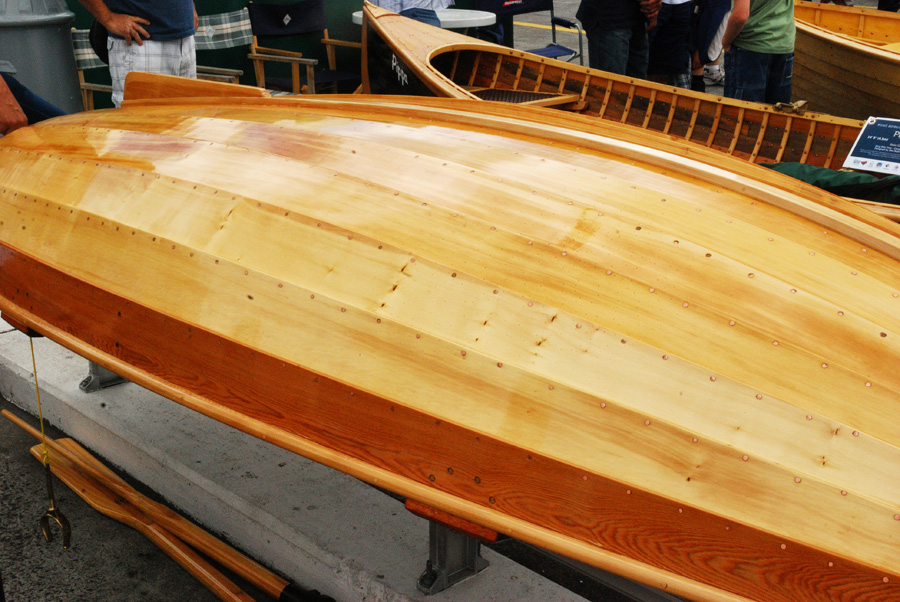 | |
A carvel-built dinghy. | The Rusich's figurehead. |